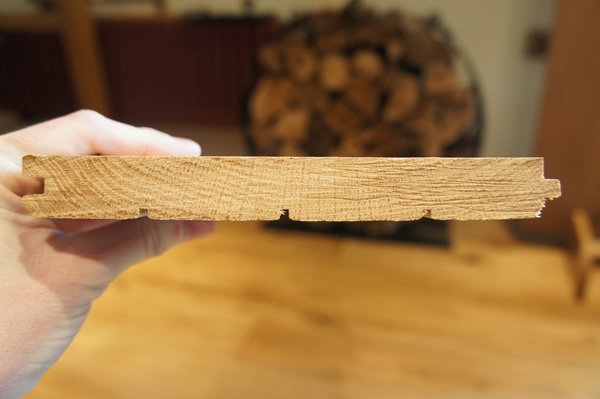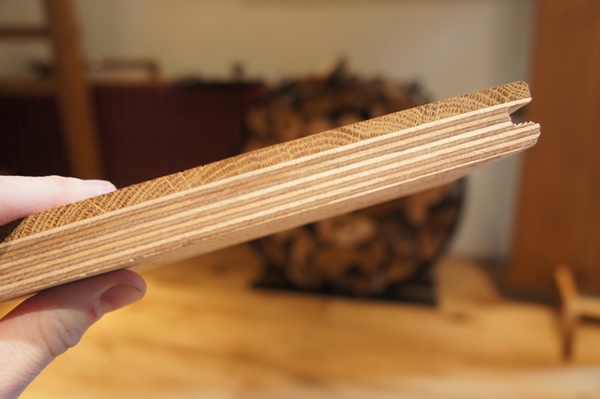Why Should I Choose Engineered Oak Flooring Over Solid Oak Flooring?
3rd Apr 2015 @ 15:36
The choice of whether you should choose solid or engineered oak flooring is a question that can only be answered depending on your own situation. So in which situations would you choose engineered oak flooring over solid oak flooring?
Lets begin by establishing exactly what solid oak flooring and what engineered oak flooring means.
Solid oak flooring boards consist 100% of solid oak. Nowadays the majority of these boards are tongue and grooved, with stress grooves on the underside. These boards are available in a number of different grades and widths, dependant on your preference. When choosing a solid oak board, be sure to take note of whether the thickness is suitable for your situation, what lengths of boards are available and the quality of the oak used.

Engineered oak flooring is made up of a combination of solid oak and a ply-board base. Again these boards are usually tongue and grooved and available in a number of widths. The same range of grades that are available with solid oak flooring are also available with engineered oak flooring. From above, equal quality solid and engineered oak boards will look indistinguishable. When choosing an engineered oak board, the key aspects to look out for is the overall thickness of the board, the thickness of the wear layer, the thickness/amount of layers of the ply, and the quality of both the oak and the ply.

If you are planning to lay your oak flooring in what could be described as more traditional circumstances, more often than not solid oak flooring is perfectly fine for the job. For example when laying over joists or an existing timber floor, in a living environment, solid oak flooring is normally used. Engineered oak flooring is generally used for more complicated situations or areas with changeable humidity’s.
A prime example of a more complicated situation is using engineered oak flooring in a kitchen or bathroom environment. These rooms in particular are likely to experience changeable moisture levels. It is these changes that can cause a solid oak flooring to expand and contract, leading to more serious problems. Due to its construction, engineered oak flooring is much less prone to these changes. This gives engineered oak boards an added stability in areas where solid oak would be less suitable.

Another example of where an engineered floor may be used over solid is when laying over a concrete sub-floor. When laying solid oak boards over concrete, the method of fixing would be to glue the boards. Due to proneness to movement of solid oak boards and the increased likeliness of this happening with wider solid boards, we do not recommend gluing boards which are wider than 120mm. For boards wider than this, we recommend using engineered oak flooring, which is more stable and less prone to movement when glued down.
In most modern day renovations, underfloor heating is being fitted more and more. With underfloor heating the fluctuations in temperature mean that the flooring will need to cope with these variable temperature changes. It is in this situation again, where we would recommend using engineered oak flooring over solid oak flooring.
If you are unsure whether you need solid or engineered oak flooring for your project, give us a call on 01538 304584.




Add a comment